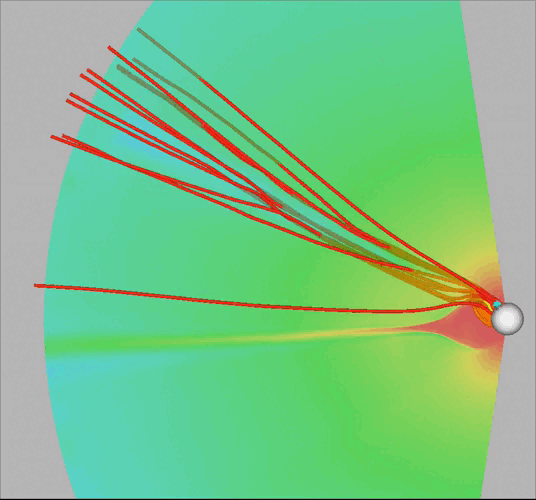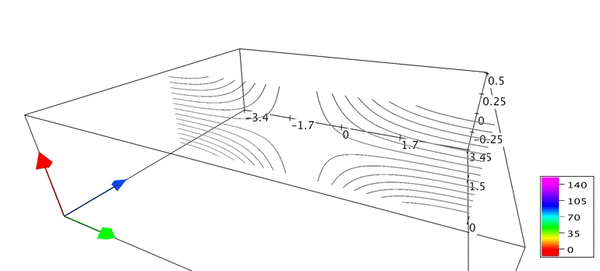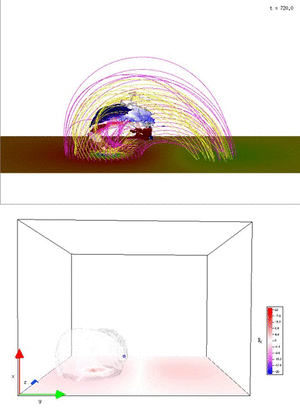Current Opportunities
Each year a small number of PhD studentships are available to apply to. I am currently looking for a PhD student. Preference will be given to home students as these are more likely to be sucessful.
The MHD group you would be joining is a close knit team that forms part of the Applied Mathematics group within the Mathematics Department at Durham. The group has an internationally recognised reputation into the theoretical study of astrophysical plasmas. In particular, in the study of the solar atmosphere and solar/stellar interiors via numerical simulations, theoretical approaches and observational analysis.
More about about my research interests and some potential PhD projects can be found below (although I'm open to other ideas!). If you are interested to learn more, or in applying, please get in touch with me by email. Some further details can be found here.
Research Interests
My main research interests lie in understanding how the process of magnetic reconnection occurs in three dimensions in the solar corona, and how this leads to events like solar flares, jets and Coronal Mass Ejections (CMEs). I have particular interest in how explosive reconnection is triggered in flares, jets and CMEs and how the magnetic field structure of the solar corona influences and is influenced by these events. I am also interested in how reconnection between open and closed field regions perturbs and structures the solar wind. My work uses a combination of computational and analytical modelling. Some nice animations from this work are shown below.
Potential PhD Projects
Potential PhD projects are listed below. Some projects involve learning to use a simulation code as part of the project. Prior coding experience would be beneficial but not essential. But a good grounding in Fluid Mechanics via undergraduate courses is essential. I also maintain active collaborations with colleagues at NASA and ESA, and working with and visiting these institutions can be discussed as part of each project. Interested candidates should get in touch via email: peter.f.wyper 'at' durham.ac.uk.
- Exploring the trigger mechaisms of Coronal Mass Ejections (CMEs). There have been many models put forward to explain the orgins of CMEs. In this project we will explore which mechanisms dominate in different configurations. You would learn how to use an MHD code and how to design and analyse simulations that test whether these eruptions can be predicted.
- Understanding the transition from coronal jets to CMEs. Jets and CMEs are part of a continuum of eruption types, but where the transition lies is not well defined. Using an MHD code you would learn to desing and analyse simulations that explore what sets the transition.
- The origin of magnetic switchbacks. Recent satellite missions (Parker Probe/Solar Orbiter) have revealed a surprising amount of fine structure within the near-Sun solar wind. Using theoretical modelling and siulations this project would investigate how perturbations launched low in the solar corona evolve as they propagate into the wind to see if they explain these new observations.
Frontiers Research Topic - Flux Rope Interaction with the Ambient Corona: from Jets to CMEs
I was recently a guest editor of a Research Topic for Frontiers of Astronomy and Astrophysics. The topic is focussed on better understanding the role played by the large-scale magnetic structure of the solar corona in eruptive events. For more information see here.
Fellowships & Grants
- Leverhulme project grant, 2024-2027, Spirals as a Window into the Heart of Astrophysical Energy Release [PI]
- NASA Internal Scientist Funding Model (ISFM) work package, 2017-2024, Magnetic Energy Storage and Explosive Release in the Solar Atmosphere [CO-I]
- NASA Living With a Star Science (LWS), 2019-2023, The Role of Magnetic Reconnection in the Onset of Solar Eruptions [CO-I]
- PROBA 2 Guest Investigator Program, 2017-2018, Pseudostreamer Filament Eruptions, Comparison with MHD Simulations [PI]
- RAS fellowship, Oct. 2016 - Oct. 2019, Explaining the Onset of Explosive Magnetic Reconnection in the Solar Corona and its Links to the Generation of Solar Energetic Particles [PI]
- NASA ROSES Heliophysics Supporting Research (HSR), 2016 - 2019, Understanding Jets, Plumes, and the Fast Solar Wind [CO-I]
- NASA Postdoctoral Program, Aug. 2014 - Aug. 2016, From Butterflies to Hurricanes: Tackling the Gulf Between Scales During 3D Solar Eruptions
Coronal Mass Ejections

Animation of a numerical simulation of a new type of coupled coronal mass ejection. The CME follows the eruption of a filament channel formed beneath a pseudostreamer. However, this eruption also catches an adjacent helmet streamer, creating a coupled psedostreamer/helmet streamer blowout CME. For more details see Wyper et al. (2021).
3D Tearing and Reconnection

Animation of a numerical simulation conducted to show the onset and non-linear evolution of tearing within a current layer formed at a 3D null. The current layer is the purple/aqua shading and the coloured lines show flux ropes formed as the layer fragments. This is an excellent example of how smooth boundary motions can lead to spontaneous complexity and explosive reconnection in astrophysical plasmas. For more details see Wyper & Pontin (2014a,b)
Solar Jets

Animation of a numerical simulation of a coronal jet confined along a short coronal loop. Typically, jets are observed along very long loops or open field regions. In this work we showed that they can also occur along short loops where the jets of fast moving plasma (red/blue surfaces, top panel) are trapped in the loop (shown by pink and yellow field lines) where they interact.
At the heart of almost all jets is reconnection occuring at a 3D null point, the separatrix surface of which separates the locally closed and open field regions. By finding this surface (grey surface, bottom panel) and tracking the null points (red/blue blobs) we showed that the same tearing process as above occurs, producing many small flux ropes. These ropes help explain some observations of blobs and bursty outflows in jets. For more details see Wyper et al. (2016a,b).